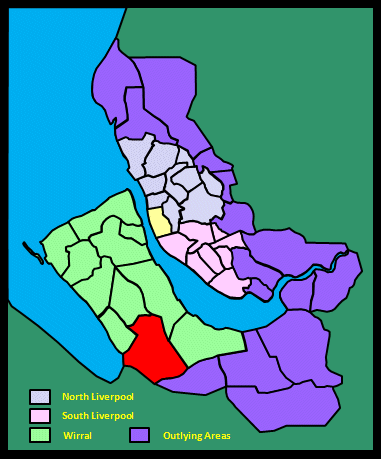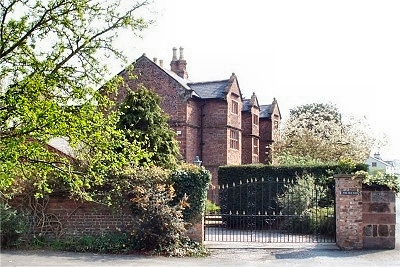 |
Willaston Old Hall
The Old Hall probably dates from the 17th century, notwithstanding a date stone saying 1558, which was probably added during a 19th century restoration. It is a red-brick building, whose Elizabethan pedigree is suggested by the three gables. |
|
Willaston in Lewis's Topographical Dictionary of England (1848)
It is a singular circumstance that Willaston is not mentioned in Domesday book, although it was of sufficient importance to confer its name upon the hundred, then called Wilaveston. The township comprises about 2300 acres, partly a sandy and partly a clay soil. The village is seated in about the centre of the hundred, and contains several substantial farmhouses. Willaston Hall, an ancient brick building, was erected by the Bennett family in 1558, and continued to be their residence until a very late period. |
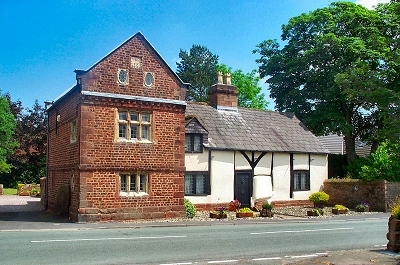 |
Ashtree Farm, Willaston
Willaston has a number of fine 17th century buildings, of which this is a lovely example. |
|
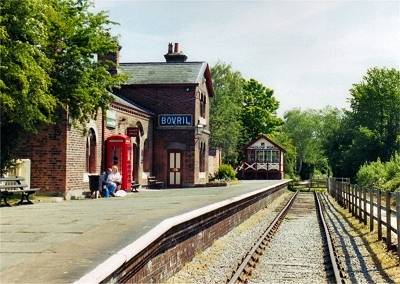 |
Hadlow Road Station, Willaston
The disused Hadlow Road railway station, once serving the attractive village of Willaston, was built in 1866 and has been lovingly restored to its condition in 1952. Rail buff or not, the jump back in time here is extraordinarily effective. |
 |
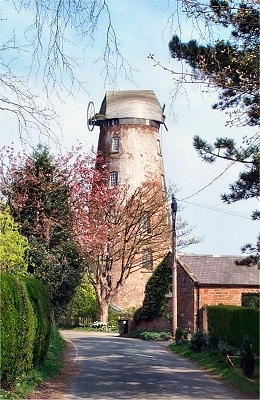 |
Willaston Windmill
There are records of a mill on the site of Willaston Windmill on Mill Lane back to 1321. Windmills were dangerous places and there are several recorded deaths in Cheshire as a result of being hit by the sails, including a Margaret Palin here at Willaston in 1774. The present structure, built of recycled materials from the previous mill, dates from 1800. At 80ft (24m) high, it was the largest of the Wirral windmills. It became disused following storm damage in 1930 and was restored and converted for residential purposes in 1958. One of the millstones now dominates the village sign on the Little Green. |
|
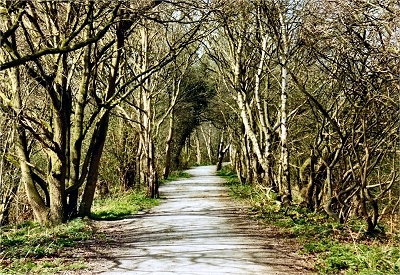 |
The Wirral Country Park near Willaston
An attractive stretch of the Wirral Country Park just west of Hadlow Road station. |
 |
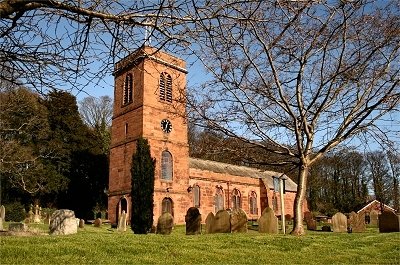 |
St. Nicholas's Church, Burton
There was a Norman church here dating from the 12th century, stones from which have been dug up in the churchyard and are preserved in the porch and beneath the tower. Built into one of the walls of the tower is a coffin lid dating from the 13th century, which is decorated with a foliated cross.The Massey chapel (named after the local Puddington family) with its surviving east window was erected in 1380 and the remainder of the present church was built in 1721 (the chancel was rebuilt in 1870). It is built of red sandstone and stands in a prominent position on the hillside above the village of Burton. |
|
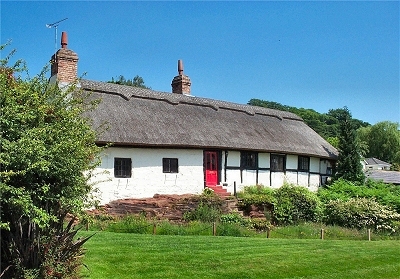 |
Barn End, Burton
Burton is one of the most ancient communities known about in Cheshire. The name means 'fortification farm or settlement', possibly referring to the earthworks at Burton Point. In the 13th and 14th centuries it was a prosperous township and an important crossroads. It was on the route from London to the Dee ports via Chester and also that from Lancashire to North Wales via the ferry at Burton Point. The site of one of the earliest hospitals, St Andrew's of Denhall (13th-14th century), is located nearby. Following the silting of the Dee in the 15th and 16th centures, Neston took over as the main port and trading centre. Nowadays Burton is a quiet residential village with some lovely black and white timber-framed houses and sandstone cottages. Barn End, one of the prettiest, dates from about 1450. |
|
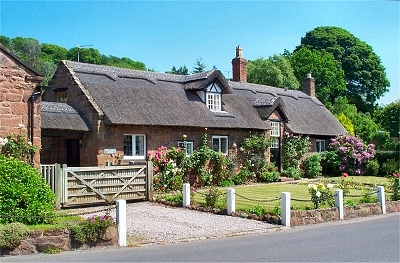 |
Bishop Wilson's Cottage, Burton
This beautiful cottage was the birthplace in 1663 of Thomas Wilson, who, as Bishop of Sodor and Man, became the most famous bishop in the history of the Isle of Man. |
|
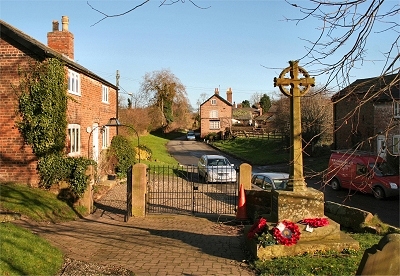 |
Shotwick Village
To visit Shotwick is like stepping back in time. A narrow dead-end lane leads to a beautiful, unspoilt and very quiet village, where nothing much seems to have changed for hundreds of years. Shotwick grew up by a ford that had crossed the River Dee to Wales since the Dark Ages. By mediaeval times, this had become an established route by which salt was transported from Cheshire to Wales. The route gained military significance in 1245, when Henry III led his army across in an attempt to sort out the Welsh, an act repeated by Edward I in 1278 and 1284, and there had been a castle about a mile up the river since the 11th century, of which only the foundations now remain. Shotwick was also a port by virtue of a deep tidal creek, the remains of which are presumably Shotwick Dale with its little brook. By the end of the 15th century, silting further up the Dee had rendered Chester of limited use as a port and Shotwick became the major port on the river. The silting continued and the main ports moved further north to Neston and Parkgate over the centuries, leaving Shotwick to its present sleepy self. |
|
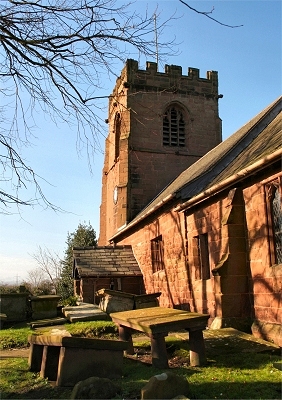 |
St. Michaels's Church, Shotwick
It is likely that there was a Saxon church, of which nothing remains, in Shotwick. A Norman church was in existence at the time of the Domesday Book and the oldest parts of the present church of St. Michael (the arch of the south doorway and the wall up to the first buttress) date from around this time. Rebuilding took place in the 14th and 15th centuries and the present tower dates from 1500. The porch bears deep grooves used in olden days for sharpening arrows for archery practice following Sunday Mass. |
|
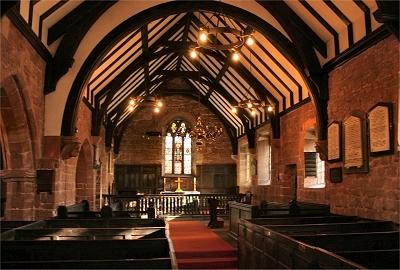 |
St. Michaels's Church Interior, Shotwick
The beautiful interior of St. Michael's (the church is normally left open) boasts a number of antiques including a curious three-decker pulpit, the churchwardens' pew of 1673 (they were the only ones provided with seating at that time!), the mid-17th century altar rails and the box pews of 1710. |
|
 |
Shotwick Hall
The brick built Shotwick Hall dates from 1662. |
|
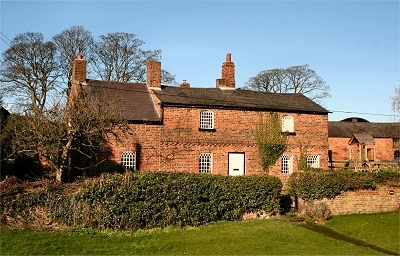 |
Vicarage Farm, Shotwick
One of the many beautiful old cottages in Shotwick, none of which seem to be less than about 250 years old. |
|
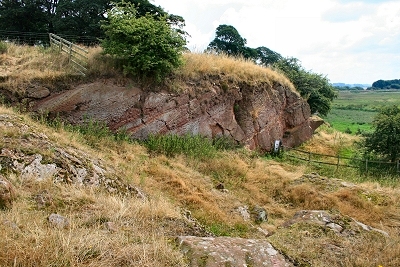 |
Burton Point
The low cliffs of Burton Point overlook the vast spread of the Dee marshes towards Flintshire in Wales. The area was still tidal up to the end of the 18th century. Burton Point was once the site of a fort or settlement, though there is little evidence of that remaining; subsequent quarrying saw to that. |
|
